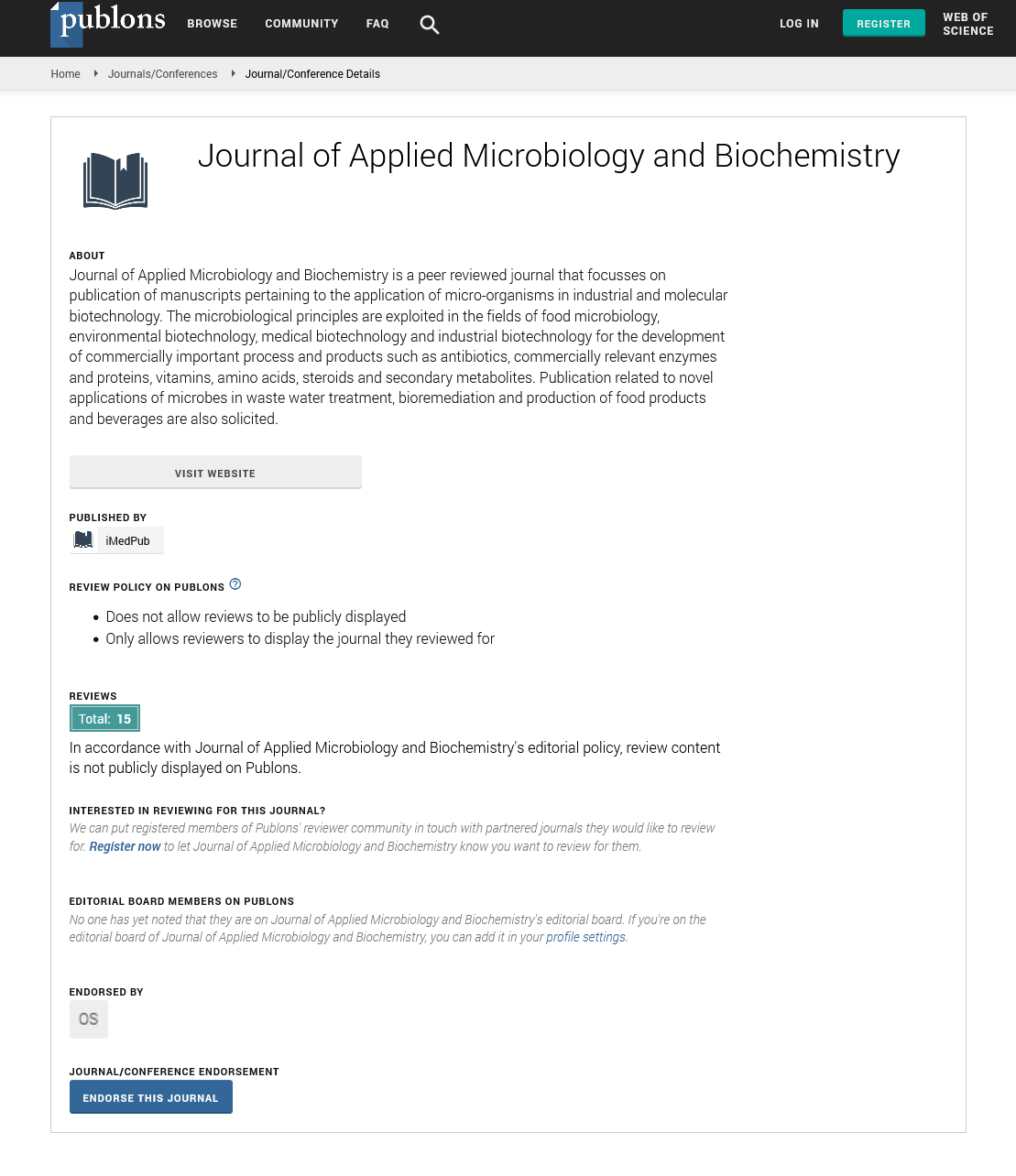ISSN : ISSN: 2576-1412
Journal of Applied Microbiology and Biochemistry
β-estradiol protects against Cu-ascorbate induced oxidative damage of isolated hepatic mitochondria with no possibility of reversal of changes: An in vitro study
7th International Congress on Biochemistry and Molecular Biology
April 28 - 29, 2023 | London, UK
Arnab Kumar Ghosh*, Aindrila Chattopadhyay and Debasish Bandyopadhyay
University of Calcutta, India Vidyasagar College, India
ScientificTracks Abstracts: JAMB
Abstract
Introduction: Estra 1,3,5 triene-3,17β-diol (β-E) is a chemical form of estrogen that mediates the regulation of the activity of female reproductive system. The antioxidant potential of this compound has recently been investigated. We have identified this compound while analysing ethyl acetate partitioned fraction of aqueous bark extract of Terminalia arjuna. In our present work, we attempted to explore the antioxidant potential of aqueous solution of β-E in a chemically defined system. Procedure: Isolated goat liver mitochondria were co and post-incubated with increasing concentrations of β-E in presence and absence of Cu-ascorbate at pH 7.4 and 370ºC and also in a time-dependent manner. Results: Mitochondrial membrane lipid peroxidation, protein carbonylation and reduced glutathione content were found to be significantly altered following incubation with Cu-ascorbate system indicating towards the generation of reactive oxygen species. Decreased NADH autofluorescence, reduced activities of Krebs cycle enzymes, electron transport chain linked enzymes, mitochondrial DNA damage and ATP content confirmed generation of oxidative stress which was further supported by increased activities of Mnsuperoxide dismutase and prooxidant enzyme xanthine oxidase. All these parameters were protected from being altered dosedependently when increasing concentrations of β-E were coincubated with liver mitochondria. However, these alterations could not be reversed following post-incubation of the system with β-E. Finally, the results of isothermal titration calorimetry revealed that β-E can prevent the binding of Cu and ascorbic acid with cytochrome c. Conclusion: β-E possesses not only a significant antioxidant potential, but also appears to possess binding capability with mitochondrial redox regulating electron carrier proteins to prevent oxidative stress induced mitochondrial dysfunction with no ability to reverse the changes.
Biography
Arnab Kumar Ghosh is presently assistant professor of Department of Applied Biology, School of Biological Science & Technology, Maulana Abul Kalam Azad University of Technology, Kolkata, India. He was former Assistant Professor of Dept. of Biochemistry of Adamas University, Kolkata and Senior Research Associate and Research Associate under CSIR-India at Department of Physiology, University of Calcutta under the supervision of Dr. Debasish Bandyopadhyay, Professor of the same department. He has done PhD at the same laboratory after completion of M.Sc. in Biochemistry at University of Calcutta. He is the life member of Society of Biological Chemists (India) and Indian Science Congress Association (New Biology Section).
Google Scholar citation report
Citations : 342
Journal of Applied Microbiology and Biochemistry received 342 citations as per Google Scholar report
Journal of Applied Microbiology and Biochemistry peer review process verified at publons
Abstracted/Indexed in
- Google Scholar
- China National Knowledge Infrastructure (CNKI)
- Cosmos IF
- Directory of Research Journal Indexing (DRJI)
- Publons
- Secret Search Engine Labs
Open Access Journals
- Aquaculture & Veterinary Science
- Chemistry & Chemical Sciences
- Clinical Sciences
- Engineering
- General Science
- Genetics & Molecular Biology
- Health Care & Nursing
- Immunology & Microbiology
- Materials Science
- Mathematics & Physics
- Medical Sciences
- Neurology & Psychiatry
- Oncology & Cancer Science
- Pharmaceutical Sciences
